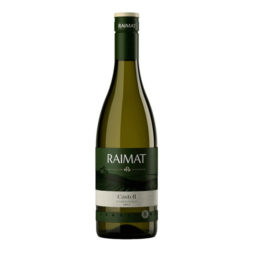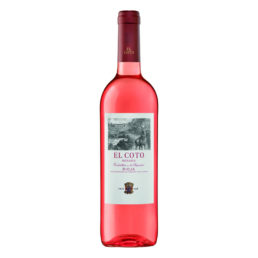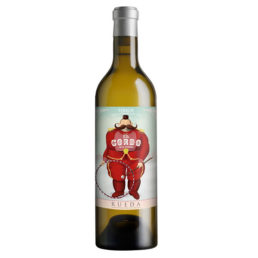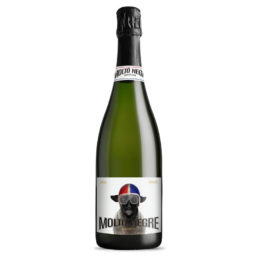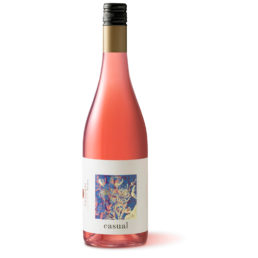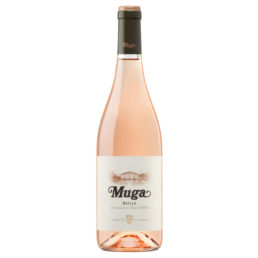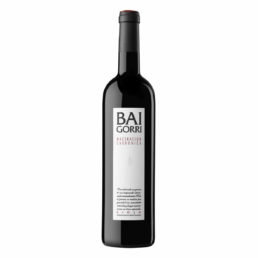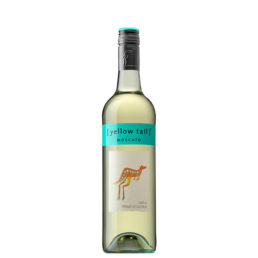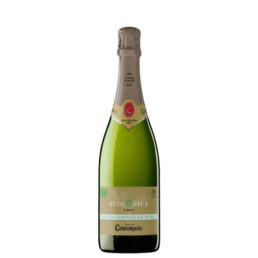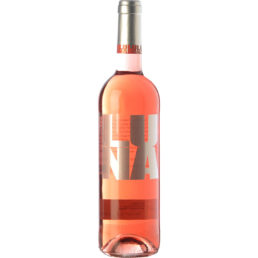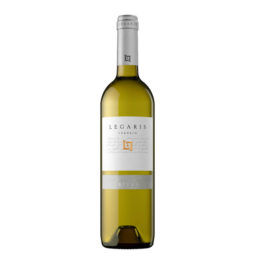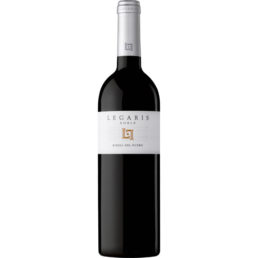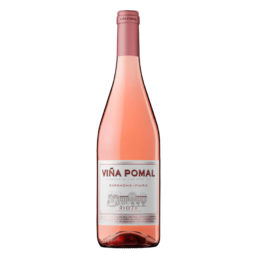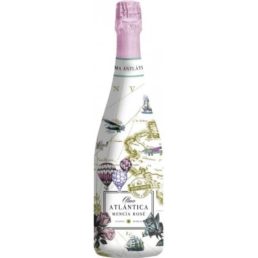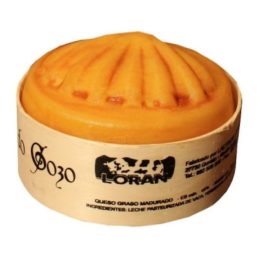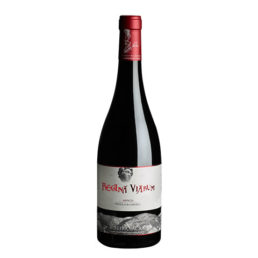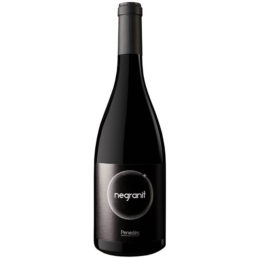Red wine of the year prepared to part with whole clusters and part with beans despalillados of the variety Tempranillo. The pre-fermentation maceration of the grapes cold, fermentations are short, in stainless steel tanks in combination with the traditional treading of the grapes gives this wine a strong personality, making it different from the wines of its kind.PairingIt is a wine intense suitable for salads of the season, inlaid, folders, creams, game dishes, rice black, roasts and red meats.
salads
Showing all 18 resultsSorted by latest
-
White wine Raimat Castell Chardonnay
Chardonnay is the varietal emblematic of Raimat. Crafted from the years 70, Chardonnay Raimat offers white wines, very aromatic, complex, fresh and fruity. Raimat Castell is the dream of a visionary, and his castle is the memory. A shield engraved in stone, found over one hundred years ago on the entry door shows a bunch of grapes and a hand. This symbol became the origin of the name Raimat (“Raïm”, grapes in Catalan, and “mà”, hand) and in the image of the brand. With Raimat Castell, we commemorate the origins of Raimat who endure with steadfastness as the walls of his castle.DEVELOPMENT (VINIFICATION)The Chardonnay is gathered in three phases: the first with a potential alcohol of the 12% (to get the citrus flavors), the second with 13% (tropical flavors) and the third time with potential alcohol of 14% (flavors of ripe apricots). The grape arrives during the night, fact that allows it to reach low temperatures, to preserve the aromas of the variety and avoid oxidation of unwanted. Is performed a pressing immediate, to then make a natural clarification at low temperatures during 24-48h. Once clean, the wort, is decanted into a stainless steel tank with cooling system for performing a controlled fermentation between 16-18 ºC. After the alcoholic fermentation, the wines are preserved in tanks, avoiding oxidation, until the time of bottling. Thanks to the possibility of being able to harvest in a step-like manner, you get different styles of Chardonnay. The blend consists in mixing these styles to give complexity to this wine white, without straying from the initial goal: to maintain the expression of the fruit and the freshness.PAIRINGRaimat Castell Chardonnay is the perfect complement to dishes containing white meat, fish, shellfish, rice, folders, and salads.PRIZES ADD 2017GOLD MEDAL MUNDUS VINI - 2018 -
Rosé Coto Wine
VARIETYTempranillo, Grenache.DEVELOPMENTRosé made in part through the bleeding of the grape flower must in the winery and in part through film maceration and subsequent pressing. The must is clarified before fermentation. Entire process of elaboration at very low temperature. -
Marqués de Cáceres Rosé Wine
The pink, Made exclusively with red Tempranillo grapes due to bleeding (shorter stay with the skins), It is one of the traditional wines of Marqués de Cáceres with an extensive catalog of pairings.TYPES OF GRAPE:96% Tempranillo, 4%Grenache inkGraduation: 13,5% -
White Wine Red House – Circus Fat
Verdejo is expressed in Castilla León. But only in Olmedo, Valladolid, are the old vines and soil suitable to provide us with this grape and these important indigenous yeasts on the lees in the development of this huge white wine. Ultimate expression of this land of fire and ice, and the character of its people.Harvest during the first week of September and the early morning hours so that the grapes from the winery with the lowest possible temperature (around 10 ° C). Once recepcionada grape maceration is done during 2-3 days and after this pressing grapes. For the preparation only yolk used and must first pressing.Fermentation in stainless steel tanks at controlled temperature of 14ºC. Subsequent transfer of heavy lees leaving only the lees and perform aging for three months, conducting weekly batonages. The final blend is subjected to a slight aging in oak. -
Cava Red House – Black sheep
Villafranca del Penedes, cradle of cava, Trepat grow grapes that give rise to our cava. Loamy texture soils, in some cases somewhat chalky, with some clay content.Upon receipt of the table in the winery temperature thereof is lowered to 5 ° C for later making pressing. Use only the flower must first pressed. Fermentation about 14 ° C 25 days to preserve the maximum power of the aromatic variety.The bottle rests for a minimum of nine months in rhyme. After the disgorgement to remove sediment is added to the liquor issue.This is a cava extra brut, with only 3,5 grams per liter of sugar. And slightly pale ink asalmonado fruit variety Trepat. floral and fruity nose, with aromas of small berries. The palate surprises until the last bubble, with one step up, tasty, creamy, where blackcurrant flavors are emphasized, blackberry and pralines.Limited production 34.623 bottles. -
Rosé wine Tandem – Casual
Casual Of casualis in Latin, accidentally, luckily.WinemakingOnce destemmed, the grapes macerated for seven hours in a stainless steel tank.Sangramos the must yolk, which ferments slowly at a temperature of 16 ºC -
Rosé wine Muga
Ring, Prado Enea and Torre Muga are among the best red wines of this country. Less well-known to the public is the excellent work carried out by the family Muga to when you develop your pink, one of the best that can be found in the D. O. Ca. Rioja: Flower of Muga Rosé 2017, mainly produced with grapes of garnacha.While the bodega Muga used for the red wines the garnachas grown in the foothills of the montes Obarenes, with a good ripening of the fruits by exposure to the sun, for the pink use bunches of garnacha from the hillside opposite, where a lower stroke allows for better freshness and preserve the fruit notes tangy and fresh, features of this Muga Rosado. The wine was fermented in small tanks made of wood and remained four months growing up with the fine lees and expanding its virtues.Elaboration After 12 hours of maceration, the wine ferments for 15-20 days in small containers of wood between 16- 18ºC. During 3 months maintain and work the fine sediments that magnify and enhance their virtues and organoleptic. Later we stabilized and cold filtered and bottled.Pairing with tartar of fish, ceviches, salads, folders, rice... -
Wine Flower of Muga Rosé
Ring, Prado Enea and Torre Muga are among the best red wines of this country. Less well-known to the public is the excellent work carried out by the family Muga to when you develop your pink, one of the best that can be found in the D. O. Ca. Rioja: Flower of Muga Rosé 2017, mainly produced with grapes of garnacha.While the bodega Muga used for the red wines the garnachas grown in the foothills of the montes Obarenes, with a good ripening of the fruits by exposure to the sun, for the pink use bunches of garnacha from the hillside opposite, where a lower stroke allows for better freshness and preserve the fruit notes tangy and fresh, features of this Muga Rosado. The wine was fermented in small tanks made of wood and remained four months growing up with the fine lees and expanding its virtues.Elaboration After 12 hours of maceration, the wine ferments for 15-20 days in small containers of wood between 16- 18ºC. During 3 months maintain and work the fine sediments that magnify and enhance their virtues and organoleptic. Later we stabilized and cold filtered and bottled.Pairing with tartar of fish, ceviches, salads, folders, rice... -
Vino blanco Beronia Blanco Viura
VINIFICATION AND AGEING Wine with a strong personality due to its production. Cold maceration of must in contact with the skins getting to extract the primary aromas from the variety.PAIRING Ideal to accompany salads and white fish in all their different elaborations, as well as white meat and little fat. -
Vino Blanco Yellow Tail Moscato
Yellow Tail Moscato this is a white wine vibrant, full of flavor and personality. Yellow Tail Moscato is made with grapes from the best vineyards. The fruit is harvested in the cool of the night, to retain the maximum freshness and flavor. Para to ensure the smoothness on the palate, is used the must flower with a light pressed. The wine was stabilized and filtered cold to preserve all of its aromas.DEVELOPMENT (VINIFICATION)The Moscato Yellow Tail is made from grapes from vineyards of the highest quality. The fruit is harvested in the cool of night to retain maximum freshness and flavor. The must is obtained by leaving it out and applying slight pressure to ensure maximum softness in the mouth. Once developed, the wine is stabilized and filtered in cold to maintain their rich aromas and their freshness. Then assembled and added to a concentrated juice of grape to reduce their alcohol content.PAIRINGEnjoy Yellow Tail Moscato well chilled, as aperitif and with salad in summer. -
Cava Codorníu – Codorníu Ecológica Zero
Codorníu Ecológica Zero it is a delicious sparkling wine without alcohol obtained by desalcoholización, elaborated with autochthonous varieties of natural crop, of the best organic vineyards in the Penedès.DEVELOPMENT (VINIFICATION)To avoid any contact with the grape and wine, and eco-friendly with the rest of our production, we decided to gather these grapes on different days of the rest of our harvest. Based on selected wines, the spirit of Codorníu Green Zero is removed carefully by using an innovative system of vacuum distillation and low temperature with respect to the wine, minimizing the loss of its characteristics. The material used in the cellar was separated from the rest, and barrels of fermentation were especially marked. Both oenological products used along the development process as the various stages that are carried out guarantee the designation of ecological.PAIRINGVINEYARD (VITICULTURE)All the vineyards from which is born Codorníu Ecológica Zero have ECO certification (European Regulations) and NOP (National Organic Program, USA) and are located in the Alt Penedès (Parellada and Macabeo) and in the Central Penedès (Xarel lo). The low yields per hectare, guarantees the maximum quality of the grape (8.500-9.000 Kg/ha, the maximum allowed is 12.000 kg/ha).Codorníu Ecológica Zero is not only a perfect toast, but a great accompaniment to snacks, seafood, salads with fruit or flowers, fish and vegetables, crudités or desserts. -
Rosé wine Caesar Prince – Clarete de Luna
Have that, before you begin the harvest, the vineyards were visited in the night by some neighbors friends others. In times when the need was the greatest company of the peoples, it was called “Clarete de Luna” the wine, which made those who did not have vineyards own, so apañaban with the other, yes, discreetly. Only the moon was witness of that feat.They were times in which the wine was important complement to the food, the claret was accompanied by the site and lunch, happy the sad and stews and help you to take better penalties. This wine is a tribute to all those who once needed and that today we enjoy.This is a wine made with Tempranillo, mainly, and white varieties such as Verdejo or Albillo. Cool, fun, sweet to all the public... and all the days. -
White wine Legaris – Legaris Verdejo
With Legaris Verdejo the winery entered in the D. O. Wheel. White wine modern for their taste and aromas, stands out as the perfect combination between the explosion of fruit and the elegance floral. The Verdejo variety provides intense aromas of white fruits and a hint of citrus (lemon). The innovative use of screw cap preserves perfectly the qualities of the wine until the time of consumption.DEVELOPMENT (VINIFICATION)Vintage night mechanical training in the trellis and day manual in vessels. Reception of grapes in the hopper, de-stemming-crushing, maceration in the press for 2-4h and subsequent pressing. Desfangados static and flotation, alcoholic fermentation at low temperature (14 ºC) with selected yeasts.VINEYARD (VITICULTURE)The area of vineyards controlled is 2.100 hectares provided by a 300 suppliers of grape. The largest concentration of vineyards are registered in the municipalities of Wheel, Sawn and Dried in the province of Valladolid and in the boundary zone of the province of Segovia, in the D. O. Wheel. The vineyard is located at an altitude of between 700 and 850 meters above sea level.The soils most characteristic are the “gravel”: soils brown, stony with good aeration and drainage. The traditional training has been the glass, while in recent years all new plantings are done in trellis.PAIRINGLegaris Verdejo is a white wine that harmonizes perfectly with tapas, rice, salads, fish and pasta. -
White wine Codorniu (Wines of the Passer) – The Talk
Poppies in the wind seem to be rotated towards the lilies, commenting on the generous spring in the highlands of Wheel. On the stony ground lies a sea of vineyards of Verdejo. Smooth, golden, its grapes provide the harmony of the aroma of fruit madura, and light notes of fresh green aniseed in the white Wines of the Passer - The Talk.DEVELOPMENT (VINIFICATION)The grape harvest, with all the care in order not to lose its fragrance. We separate the stems from the grapes and maceramos a few hours the berries to release the evocative aromas contained in the skin of grapes, and pick them up in the wort. The must is fermented at a low temperature (14 ºC) slowly revealing the aromatic expression of this variety.VINEYARD (VITICULTURE)Vine in glass on floors brown, stony are the traditional landscape in the area of Wheel; in good relations with new trellised vineyards, showing a balance of tradition and modernity.PAIRING
Wines of the Passer - The Talk is a white wine that harmonizes perfectly with creams, salads, sautéed vegetables, incoming, seafood, smoked, white meat, legumes and pasta or rice dishes. -
Red wine Legaris Roble
Legaris Roble it is a wine 100% Tinto Fino that seeks out the maximum fruit expression of the variety. A wine designed to offer a great intensity of varietal.DEVELOPMENT (VINIFICATION)Vintage 2016 was carried out between the days 4 and 27 October. The grapes are despalilló and moved virtually the entire deposits. After a cold pre-fermentation maceration of 48 hours, performed the alcoholic fermentation to 24 ºC in order to preserve the varietal aromas. The total duration of the maceration was 8-10 days. Then the wine was spontaneously the malolactic fermentation takes place in stainless steel tanks. Once, the wine went into american oak barrels, where he spent a total of 3 months. Subsequently a slight clarification and a final filtration to refine the wine before bottling.VINEYARD (VITICULTURE)Selected grapes coming from the estates of Legaris and suppliers controlled.Soils: alluvial, cascajosos, franco-sandy; and meanders around the River Duero. Viticulture: planting North-South. Selected Clones free of virus. Pruning cuts. Passes of green pruning to clear, pruning in the face of this (morning sun) of the rows, and thinning of clusters. Irrigation: due to the low rainfall of the area, to the poverty of the soils and the presence of a plant cover, it is vital to the irrigation. We use techniques of deficit irrigation controlled by applying water stress. Integrated Control of Pests: do not use insecticides or antibotrytis. Low pressure for mildew and control of oidium mainly with organic products. Vintage: to decide the optimal time of harvest, apart from the monitoring of ripening analytical, it also makes the tasting of the grapes to evaluate the maturity of the phenolic of these. It performs selective harvesting, harvesting the grapes and making the different terroirs separately.After a winter in which the vine has been sitting in conditions sweet and with a precipitation rate lower than usual, the spring with abundant rainfall and low temperatures delayed the outbreak of the vine more than usual. The summer characterised by high temperatures, with no rain, it has been some blockage in the plants as a result of the need of the plants close their stomata to prevent excessive dehydration which has resulted in a defendant's retardation in the time of ripening, especially in young plants and in those located on land more arid.PAIRINGLegaris Roble is ideal to accompany white meats, folders,salads, tapas and fresh cheeses -
Rosé wine of Bodegas Bilbaínas – Viña Pomal
First pink of Viña Pomal. It is made with a 70% of Grenache and a 30% of Viura, traditional varieties for rosé wines of Rioja. Able to satisfy wine lovers classic but has an edgy touch.DEVELOPMENT (VINIFICATION)Viña Pomal Pink is produced by the method of “bleeding”. Once received the grape in the winery is performed the process of destemming and crushing traditional, and encuba in a warehouse where we make a slight maceration in cold for at least 12 hours. When the color of the juice is the desired, it makes the “bleeding” that consists in separating the grape must tear the skins. This wort is fermented at a controlled temperature of 14 ºC, keeping the aromas and the freshness of the wine.VINEYARD (VITICULTURE)From vineyards located in the Rioja Alta, area of atlantic influence with soils of heterogeneous low fertility and texture specific. With these characteristics, the varieties Garnacha and Viura, traditional rosé Rioja, they offer their maximum fullness to get a pink wine color only, acidity is a feature that provides freshness and youth and nuances varietals that make the long and expressive.PAIRINGViña Pomal Pink goes with all kinds of incoming, stew and salad as well as pasta, pizza and rice dishes. Also Ideal for pairing with dishes with seafood and blue fish. -
White wine Giró del Gorner
The wine Blanc Penedès of Turned the Gorner is a classic Penedès. A wine that aims to recover the wines of our ancestors, developed basically with the typical varieties, the Penedès: Macabeu, Xarello and Parellada. There are No more secrets that few vineyards pampered, a few selected grapes, a gentle pressing, time and enjoy it.Elaboration:
Smooth extraction of the flower must. The fermentation has gone by very slowly, between the 15 and 18ºC.
Pairing:Perfect to accompany appetizers, salads, fish and seafood, cheeses and light white meats












